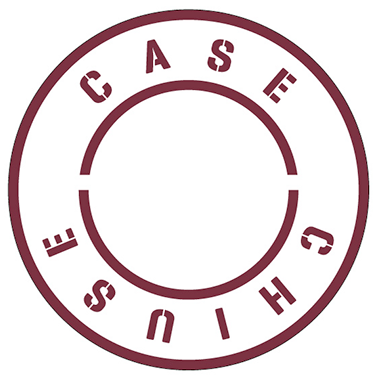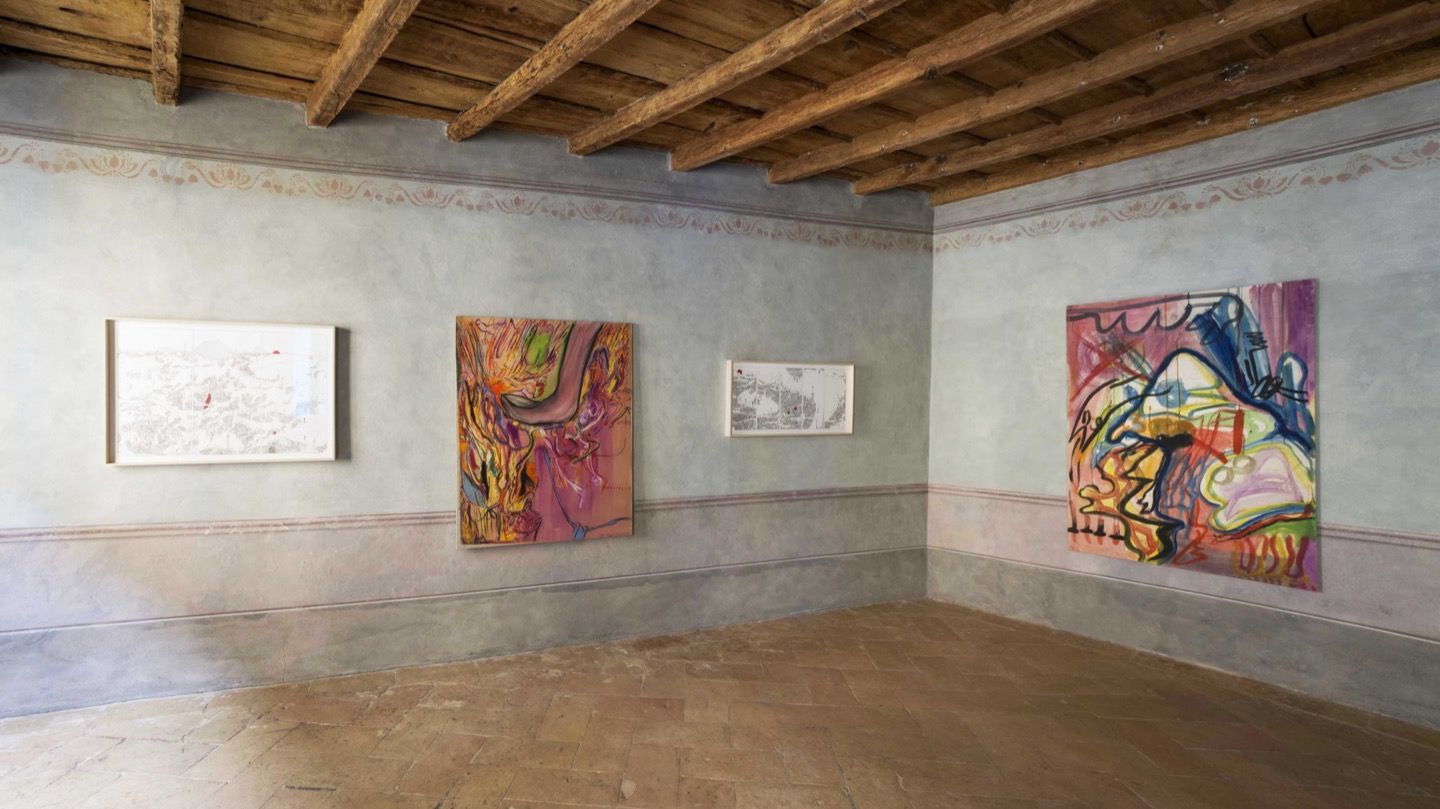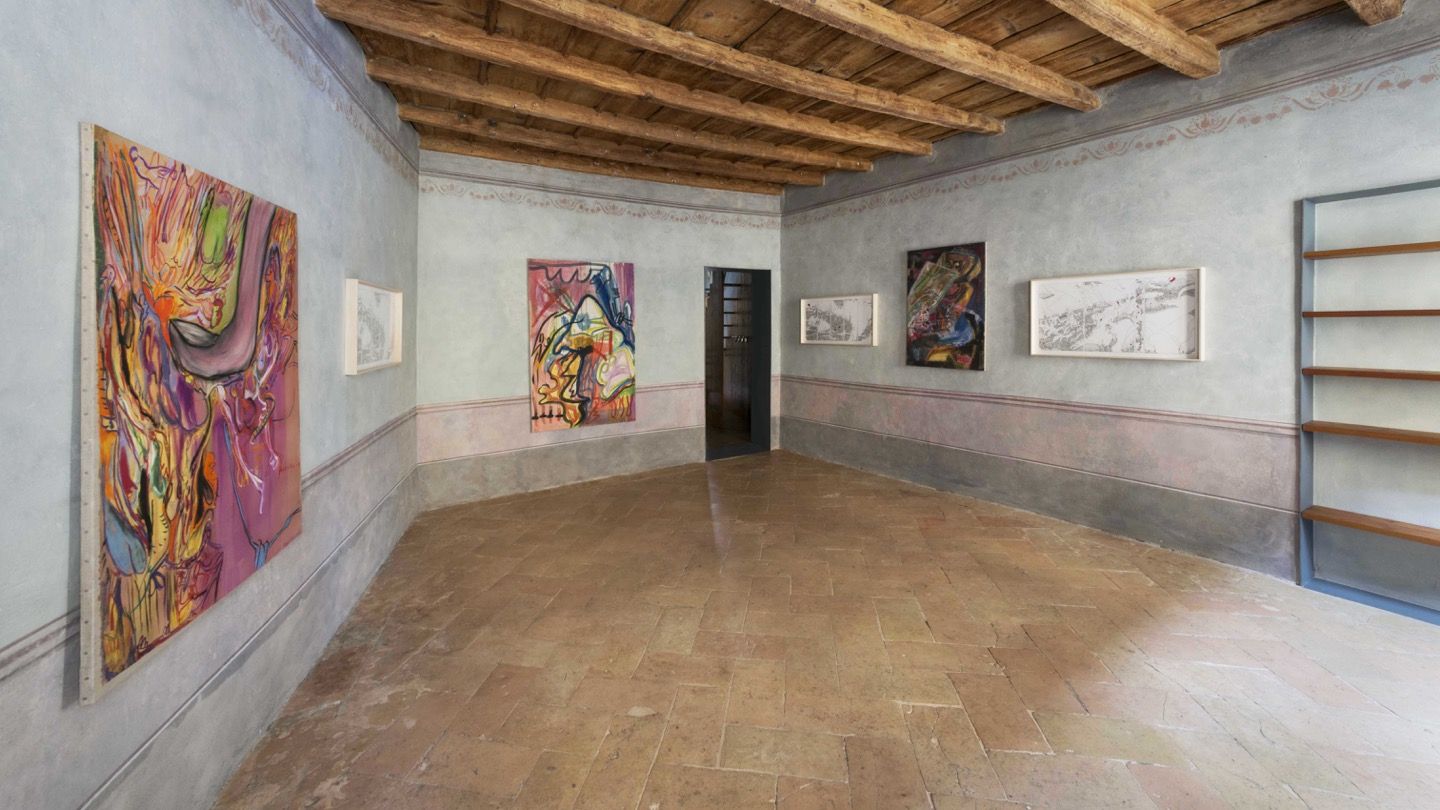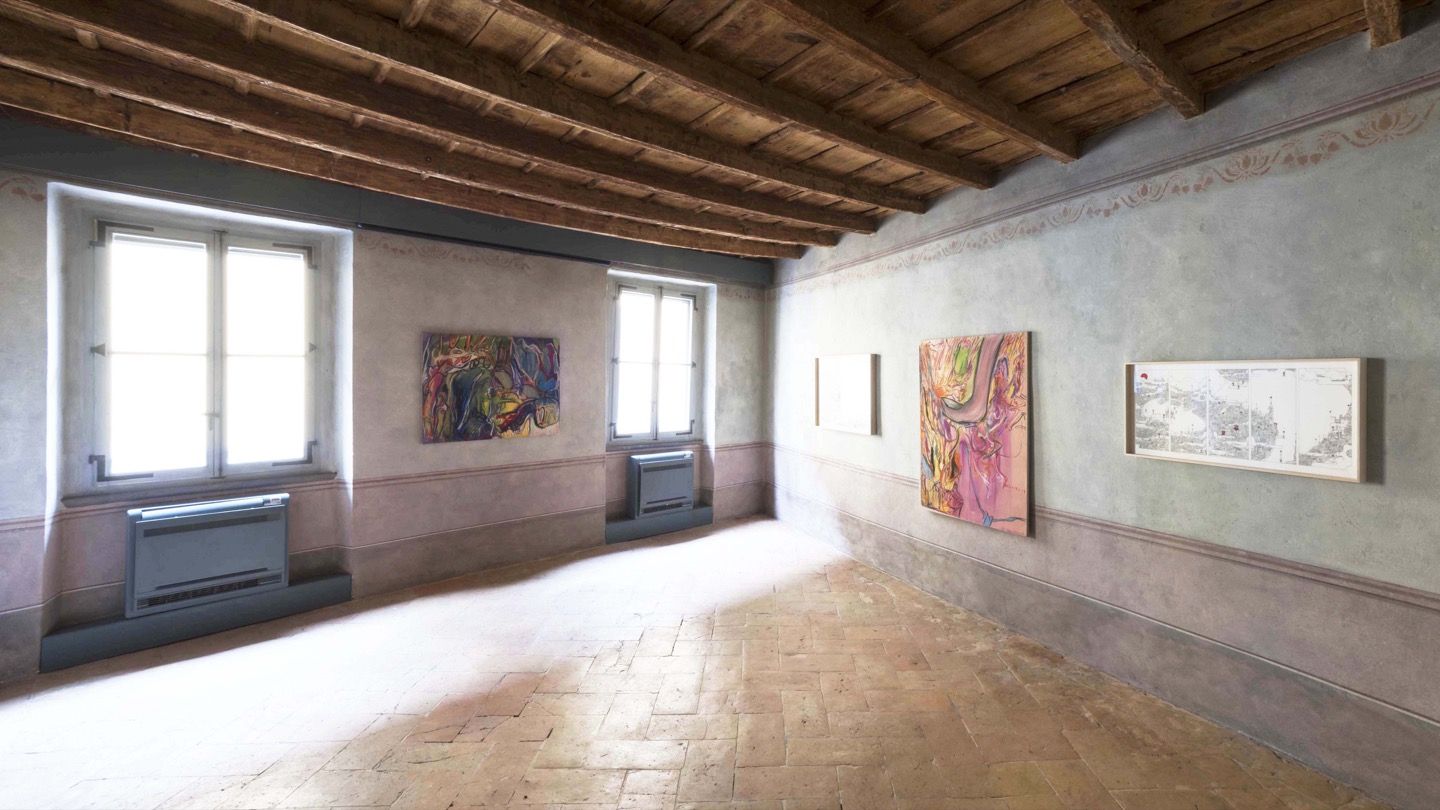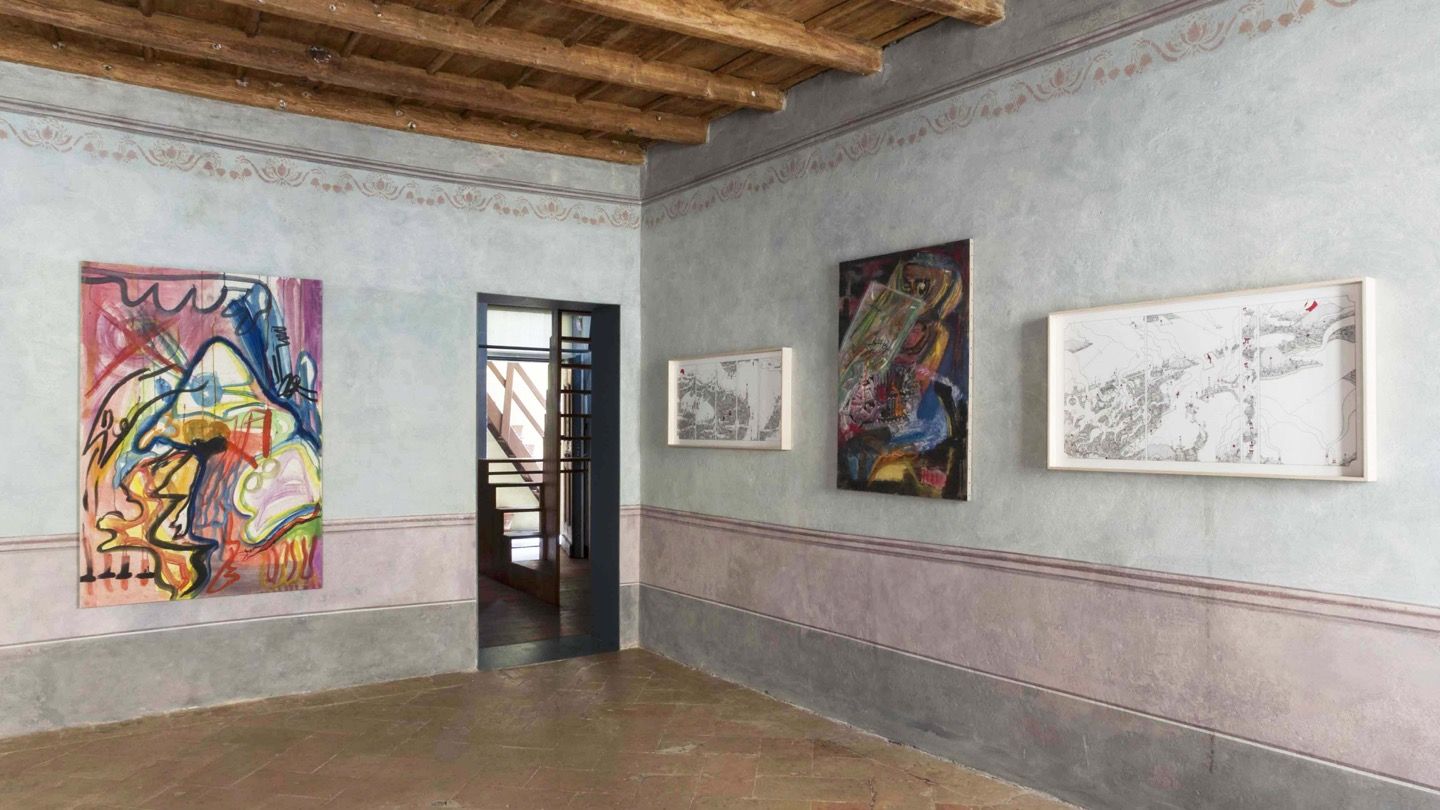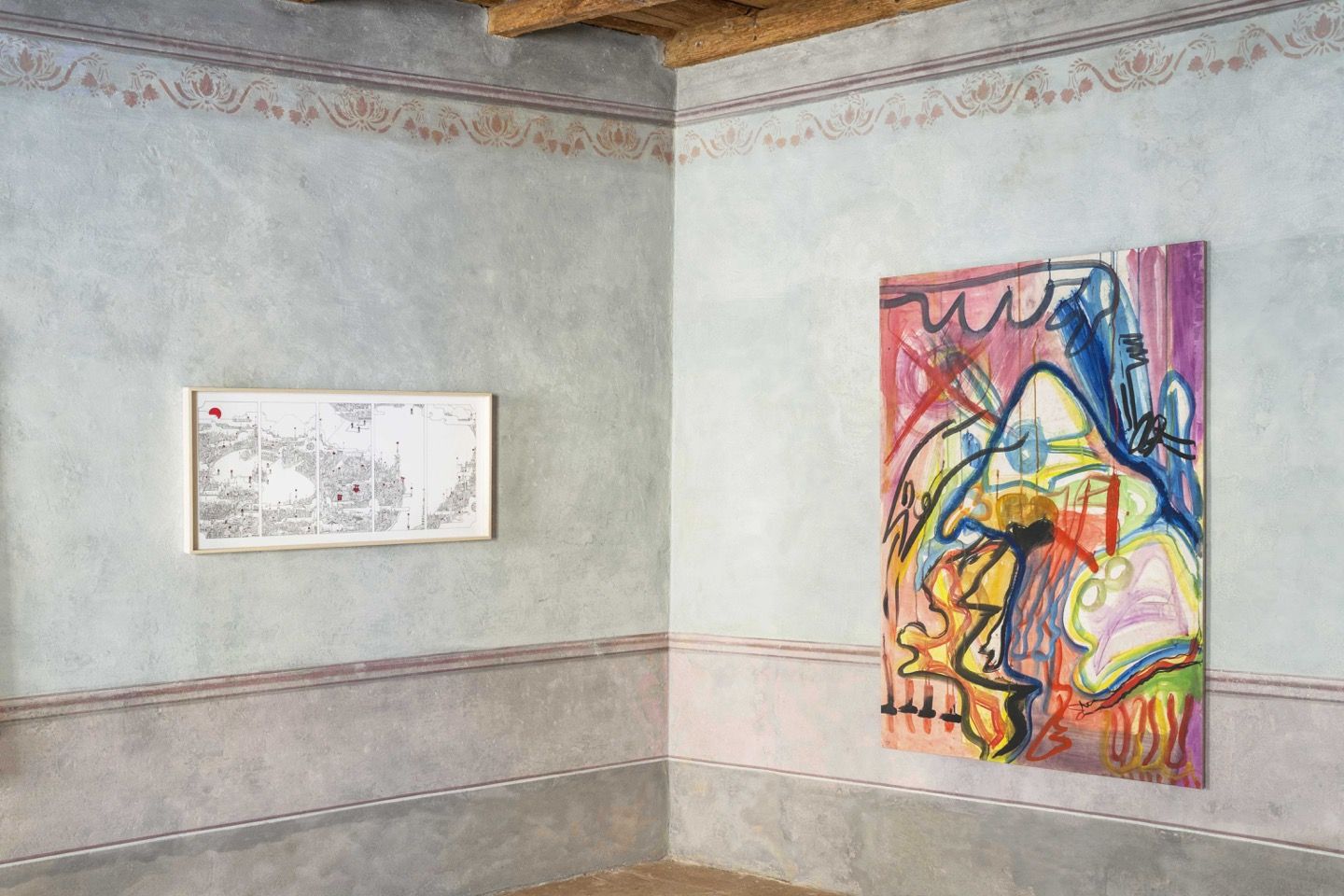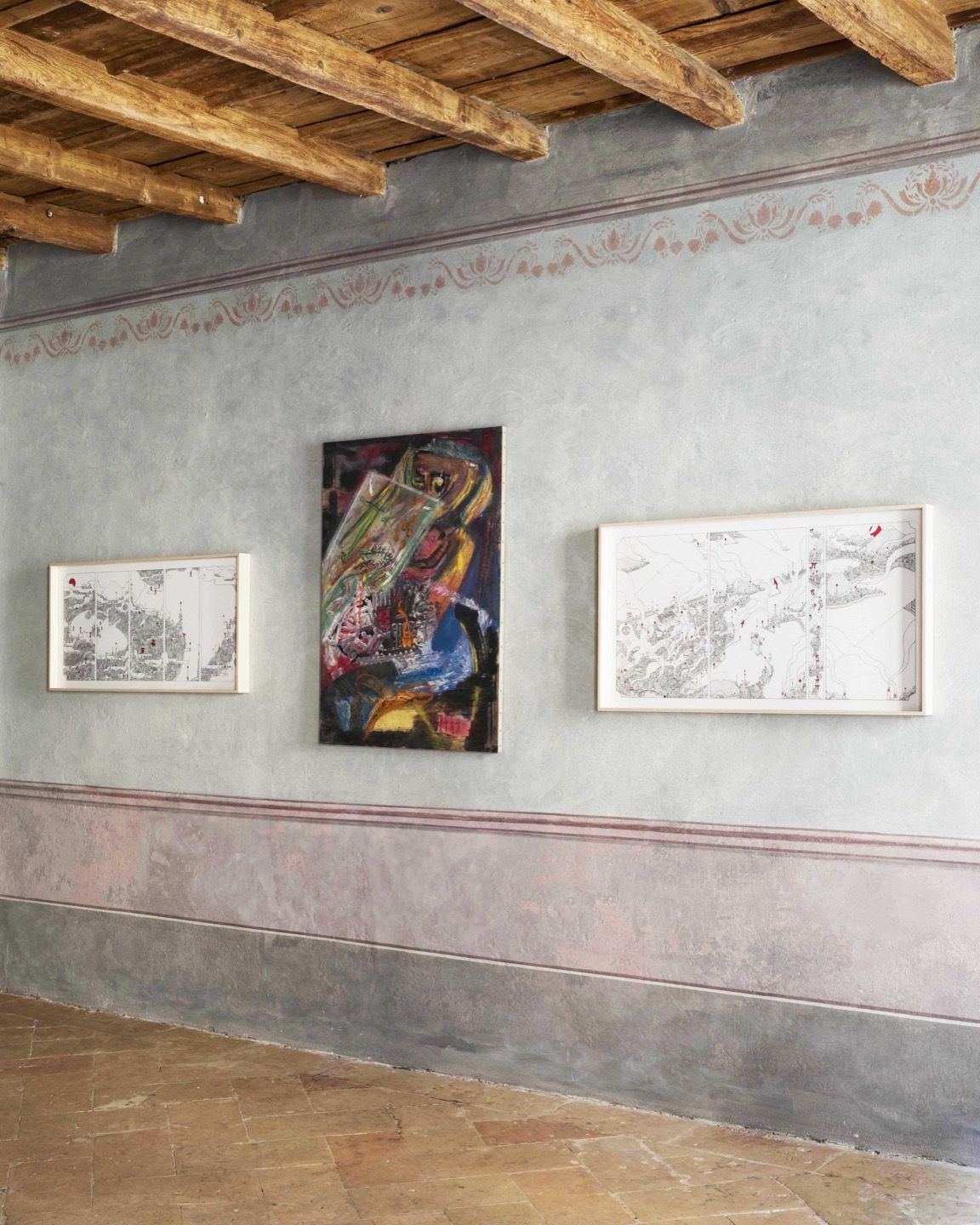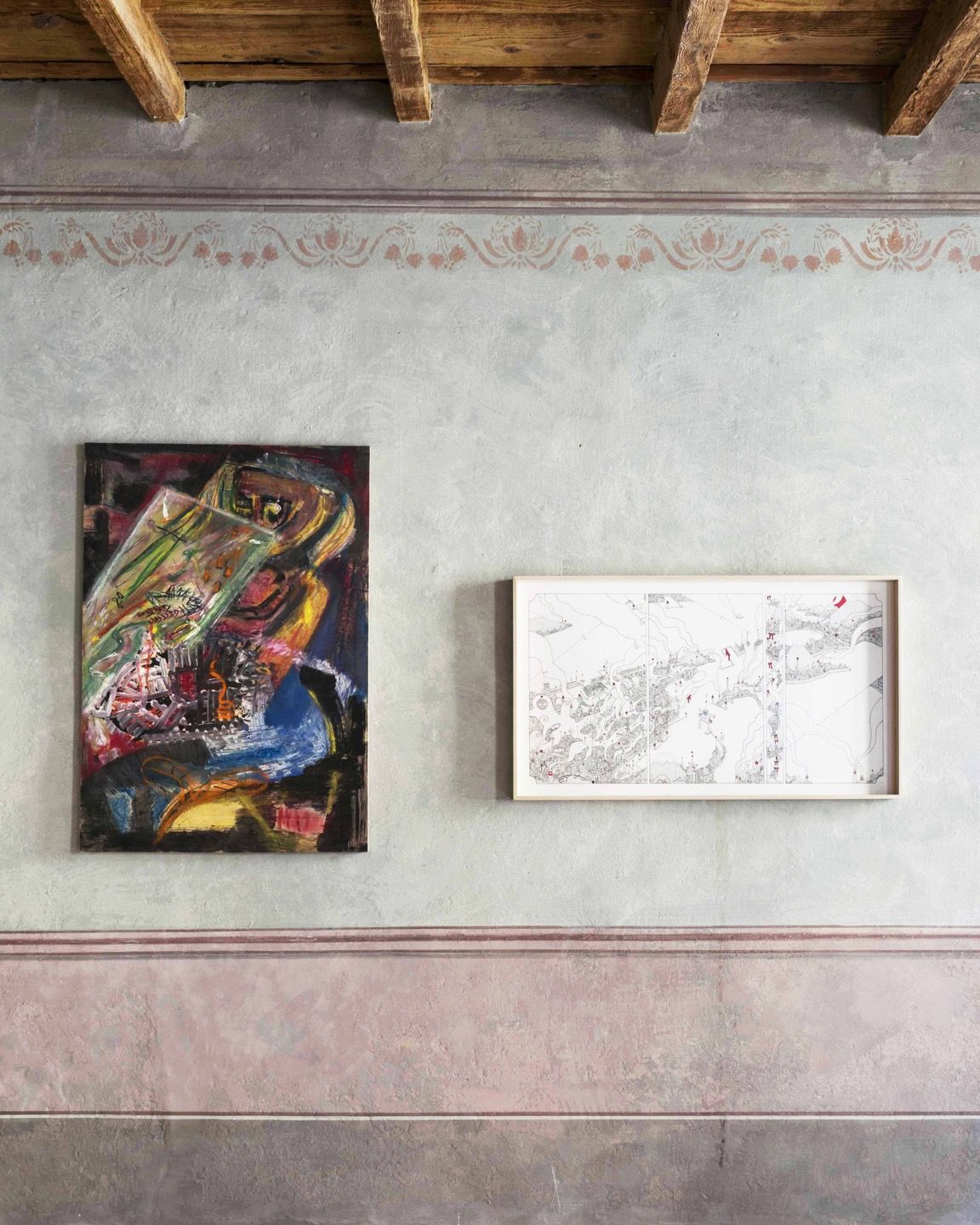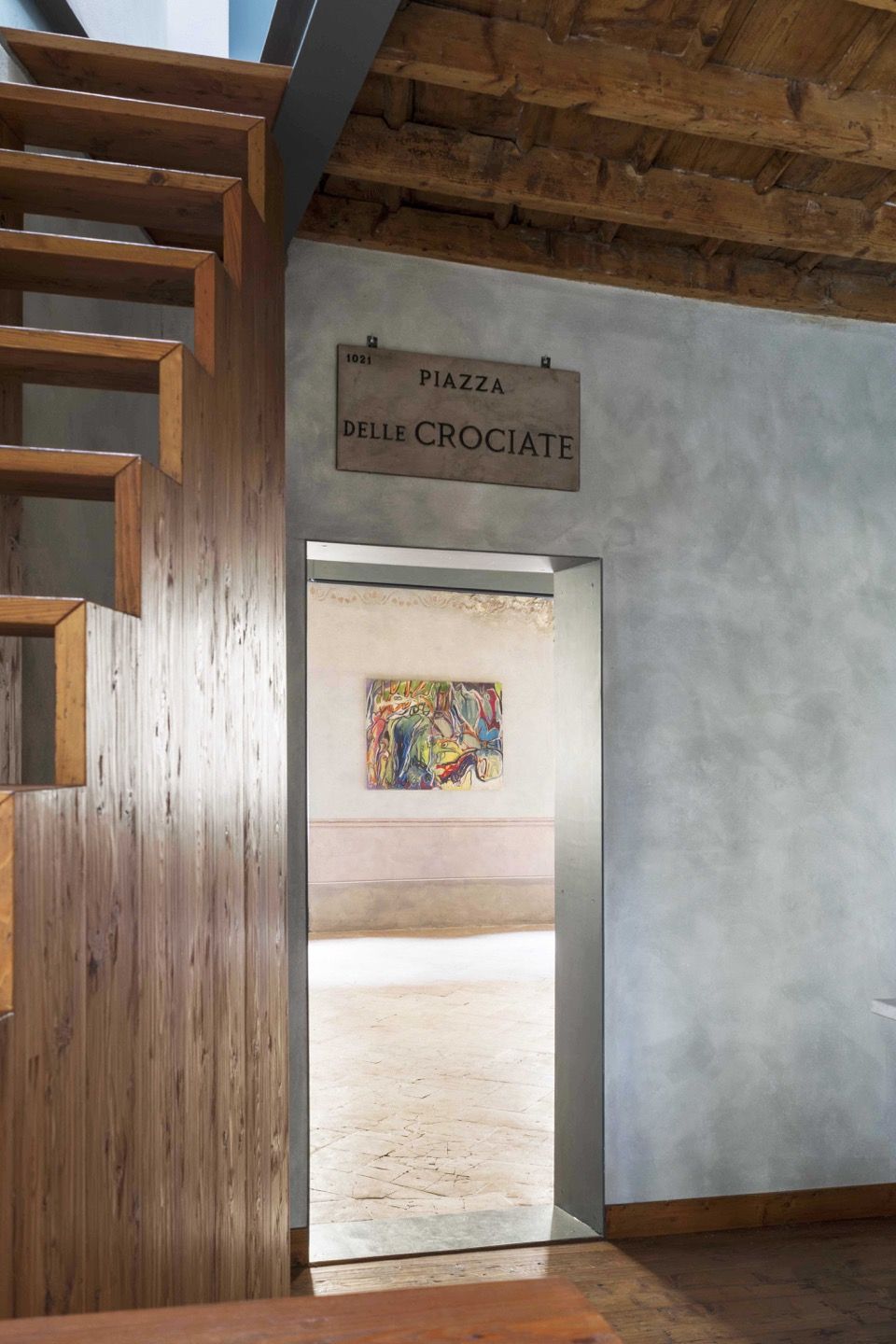Ex-casa Cipelletti via Anfiteatro 9, Milano
April 7th - 21st, 2015
ALDO MONDINO / TAREK ABBAR
Case Chiuse #02 by Paola Clerico
The works of Aldo Mondino on view at Via Anfiteatro were made in 1961 and belong to the artist’s first period in Paris. They are large works on paper, rich in color and movement, still bearing traces of the Surrealist aesthetic – especially the influence of Tancredi, for whom Aldo worked as an assistant. These youthful works represent the prelude to the Tavole Anatomiche shown in 1963 at Galleria il Punto in Turin.
For Mondino, the Tavole Anatomiche are metaphors of the crisis of contemporary society, described through the organs of the human body; a sort of inner mapping of the organism obtained through a tangle of quick brushstrokes in vibrant tones. It is in these early works that Mondino starts to translate abstract concepts into tangible symbols. Far from any pedagogical content, never dogmatic or ideological, Mondino – from the start of the 1960s – combines serious political engagement and subversive intent with the lightness of play and wit. He always acts in total freedom, but with pondered awareness, driven by the deep intellectual urge to make truth emerge.
The works of Tarek Abbar are also drawings on paper in large format, and represent the cartographic aspect of his fictional political project ZATO. Maps traced with obsessive, painstaking care in black ink, alternating with patches of red, where unidentifiable landscape features and buildings infinitely repeat and multiply. Like Mondino’s drawings, these are “first works”, since they are shown in public here for the first time.
ZATO is a Russian acronym, the abbreviation for “Closed Administrative Territorial Formations”: secret Soviet cities, centers of aerospace research or fabrication of biological, chemical and nuclear weapons; nameless settlements that can be located on maps only by knowing the number of miles between them and the nearest city.
Tarek Abbar inserts play and overturns history catapulting us into an unspecified time in which Japan, instead of opening to the West, enters into political and trade relations with Russia. Absorbed into the sphere of influence of the Soviet Union, the Japanese archipelago is transformed into a cluster of ZATOs and industrial collectives: Abbar’s urban maps bear witness to this imaginary Edo-Real-Socialist epoch. In these delirious metropolitan landscapes done in Yamato-e style and without real geographical references, the disorienting alternation of aerial and frontal views warps distances and blurs visual clarity.
The works of Aldo Mondino and Tarek Abbar, though very different in formal terms, meet and interpenetrate at Via Anfiteatro due to the conceptual premises behind their respective researches: the serious, profound observation of reality; the love of travel seen as pursuit of the elsewhere; political commitment tempered by a playful approach and subtle irony; a pure gaze that captures amazement and wonder – everything that, to sum things up, can be defined as enrichment through flights of the imagination. Observing the anatomical charts of Mondino and the imaginary maps of Abbar, I couldn’t help but think of Flatland by Edwin Abbott Abbott.
Reverend Abbott speaks to us of a similar enrichment through fantasy and imagination, describing Flatland as a State inhabited only by flat geometrical figures: lines, triangles, squares and polygons that move on a two-dimensional plane and exist inside the rigid order of a suffocating structure. They cannot even conceive of a third dimension, nor are they able to expand their visual perspective on reality. Flatland is thus the metaphor of the flatness and rigor of the Victorian social structure, narrated with masterful irony.
Abbar’s cityscapes also narrate a flatness, a two-dimensional condition that links up with the Japanese Yamato-e pictorial style. Yet, by contrast, they also evoke the three-dimensional character of our cities, the complexity of the world around us, the depth of a carefully studied and balanced Invention. Likewise, the flat Tavole Anatomiche of Mondino allude to the movement and multi- dimensional nature of our emotions – to the stereoscopic configuration of our inner world.
Like Abbott, Abbar and Mondino criticize with wit. Tarek deforms the view of our reality through a fantastic political fable; Mondino, nearsighted throughout his life, never wore glasses. Through their works – and the imaginative force of an “other” gaze – they permit us to dream, to access an extraordinary vision. And to further multiply that vision, I have asked Federico Florian to write a story about the meeting of Abbar and Mondino in the Casa Chiusa of Via Anfiteatro.
Paola Clerico
Japan, 1963.
Smoke from the chimney hovers around the buildings in this concrete forest. They rise like tall trees, age-old cement oaks. Rays of sunlight cannot penetrate the jungle of towers; the feeble light that filters to the lower levels fades in contact with the greasy clouds of soot.
This city has no name. Some call it Kamakura98. A massive iron wall surrounds the inhabited area. No one is allowed to enter or exit the gates of the city – that is the law of the State. The labyrinth of streets skirts the perimeter of buildings, forming a twisting maze. There are no squares, no gardens: the only open space not suffocated by the concrete of the houses is the pier of the military port. The residents call this area Iki, “breath”. From here, amidst the moored ships, it is possible to make out the bay in its entirety. Turning by 180 degrees, one sees the white triangle of Mt. Fuji peacefully poking over the summits of the skyscrapers.
Luminous red stars – bloodied by sudden electrical discharges – punctuate the towers and the upper levels of the buildings. Enormous murals with hammers and sickles adorn the walls of certain edifices. In the exact center of the metropolis, on a hill, stands an imposing construction, similar to a Shinto sanctuary. Looking closely, it can be seen to be an observation tower. No religion is allowed at Kamakura98 – the only shared faith is that of technological progress.
The inhabitants – whose physiognomy blends Russian and Japanese features – are sworn to secrecy and subjected to rigid surveillance. Citizens of a phantom settlement not found on geographical maps, they lead an existence devoted to labor. Among them there are engineers, scientists, mathematicians and laborers; during the day they work in underground offices, nuclear power plants, suspended factories, guided by a common goal: the scientific progress of the Confederacy.
The Government monitors, hour after hour, the lives of the citizens of Kamakura98. To communicate, those citizens use an official vocabulary composed of just 999 words. It is forbidden to use foreign terms or suspect words. The Department of Communication of the Central Government has been developing a program of linguistic cleansing for several years now. The aim is to erase from the memory of inhabitants all words with an equivocal or ambiguous meaning, which would make them potentially dangerous. Violators are subjected to severe punishments. Some say that a small group of citizens communicates through telepathy – a practice that would permit escape from the absolute control of the State, for those capable of using it.
The inhabitants of this city are not able to express their emotions, either through words or through gestures. Displays of affection or despair like smiles, tears and shouts are forbidden. Though lacking in any sentimental education, the citizens of Kamakura98 produce emotional tablets every day – figurative representations of their inner passions. The upheavals and tensions of mood are illustrated through lively colors, tangles of lines, quick brushstrokes. On odd-number days of each month they usually gather on the Iki, at sunset, to exchange their drawings. It is precisely here, in this windy place embraced by the sea, that affinities, friendships and love affairs begin, but also hostilities, fears and jealousies. This is the only form of post-verbal communication the Central State permits for the inhabitants of Kamakura98. We have had a chance to see some specimens of these tablets, buried amidst the stones of the pier of the military port.
Federico Florian
Case Chiuse#02 – in collaboration with Archivio Aldo Mondino, Milan
Lightning by Luceplan
